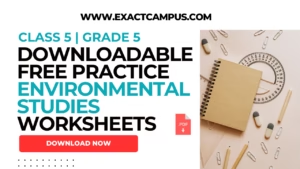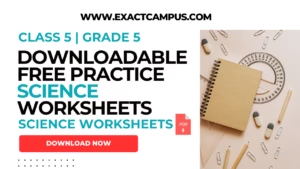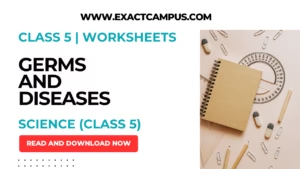Table of Contents
Part 1: Introduction and Grouping of Materials
Introduction
Hello students! I’m so happy to see you all back after the holidays. Today, we’re going to explore something that is all around us – in fact, you’re probably holding some of it right now. Any guesses? Yes – we’re going to learn about materials!
Just look around your classroom or your home. What do you see? A chair, a notebook, your pen, your school bag – all these things are made of different materials like wood, plastic, cloth, or metal. And that’s what this chapter is all about – Materials Around Us.
What are materials?
A material is any substance that is used to make an object. So your notebook is made of paper, your bottle might be made of plastic or metal, and your shoes could be made of rubber and fabric.
But here’s something interesting – one object can be made from many materials. Think of a pen: it may have a plastic body, a metal clip, and ink inside.
Grouping Materials
Now let’s think – how do we organize or group these materials?
Let me ask you a question: in your kitchen at home, where are the spoons kept? What about the masalas or grains?
Yes! Everything is sorted. Similarly, we group materials based on common properties, like:
- Their shape or colour
- Whether they are hard or soft
- Whether they are shiny or dull
- If we can see through them or not
- And whether they mix with water or not
Grouping materials helps us decide which one to use for what. For example, would you use a paper cup to boil water? No! Because paper burns. But you can use a metal pot – because it is strong and heat-resistant.
Part 2: Properties of Materials
Let’s now explore the important properties of materials.
Appearance – Lustrous vs Non-lustrous
Have you seen a gold bangle or a steel spoon shine under light? That shine is called lustre.
Materials that shine are called lustrous, like gold, copper, or aluminium.
Others like paper or wood don’t shine. They are non-lustrous.
Not all shiny things are metals. Some are polished or coated to look shiny. So, “All that glitters is not gold!”
Hardness – Hard vs Soft
Let’s try a small experiment in our minds. Imagine pressing a sponge. Easy, right? Now think about pressing a rock. Not easy!
Materials that can be pressed or scratched easily are called soft – like cotton, rubber, or sponge.
Hard materials don’t change shape easily. They’re tough to scratch or press – like iron, wood, or stone.
Transparency – Transparent, Translucent, and Opaque
Can you see through a glass window? Yes! Then the glass is transparent.
But can you see clearly through a foggy bathroom glass? Not really. That’s translucent.
And what about a wooden door? Nothing can be seen through it. That’s opaque.
So, remember:
- Transparent: You can see clearly
- Translucent: You can see, but not clearly
- Opaque: You can’t see through at all
Solubility – Soluble vs Insoluble
Let’s make lemonade! Add sugar and salt to water and stir. What happens? They disappear. That means they dissolve. They are soluble.
Now add sand or sawdust. No matter how much you stir, they don’t dissolve. These are insoluble.
Even liquids behave this way. Vinegar mixes with water, but oil does not.
Mass – How Heavy or Light?
Take three identical paper cups. Fill one with water, one with sand, and one with pebbles. Which one feels heavier? Yes – the one with pebbles!
This is because of mass – the amount of matter in something. We measure it in grams (g) or kilograms (kg).
Volume – How Much Space It Takes
Now, imagine pouring water from your bottle into a glass. Sometimes it fills half the glass, sometimes more. That space the water takes up is called volume. We measure it in litres (L) or millilitres (mL).
Part 3: What is Matter & Summary
What is Matter?
Let’s bring it all together.
Anything that has mass and takes up space is called Matter.
So whether it’s water, air, sand, or your eraser – it’s all matter.
Even air is matter. We can’t see it, but it occupies space and has mass.
Ancient Indian Science Connection
Do you know that in ancient India, Ayurveda had already classified materials based on 20 different properties? These included pairs like:
- Heavy or light
- Hot or cold
- Soft or hard
Our ancestors were truly wise!
Summary – Let’s Revise!
- Materials are the substances used to make objects
- They can be grouped by properties: shiny/dull, hard/soft, transparent/opaque, soluble/insoluble
- They have mass and volume
- All of them are examples of matter
- Grouping helps us choose the right material for the right use
Now you know – science is not just about labs and formulas. It’s about understanding the world around you. Everything you touch, use, or see – has a story of materials behind it.
So keep exploring and stay curious!





